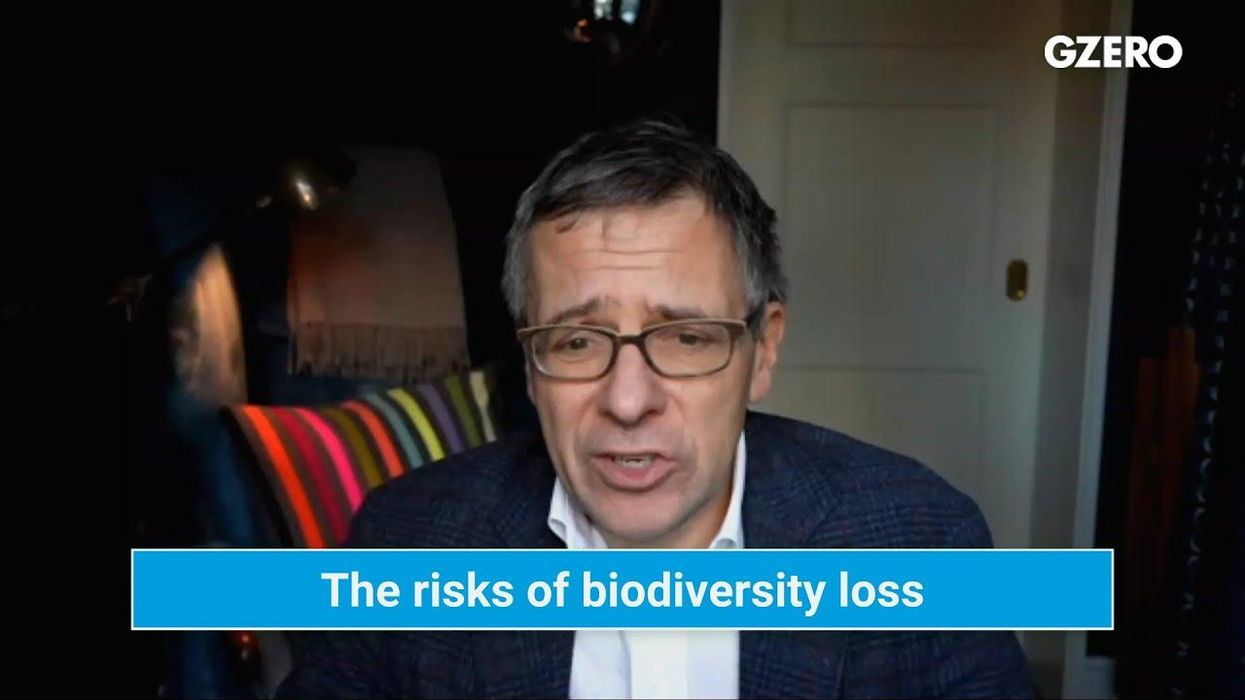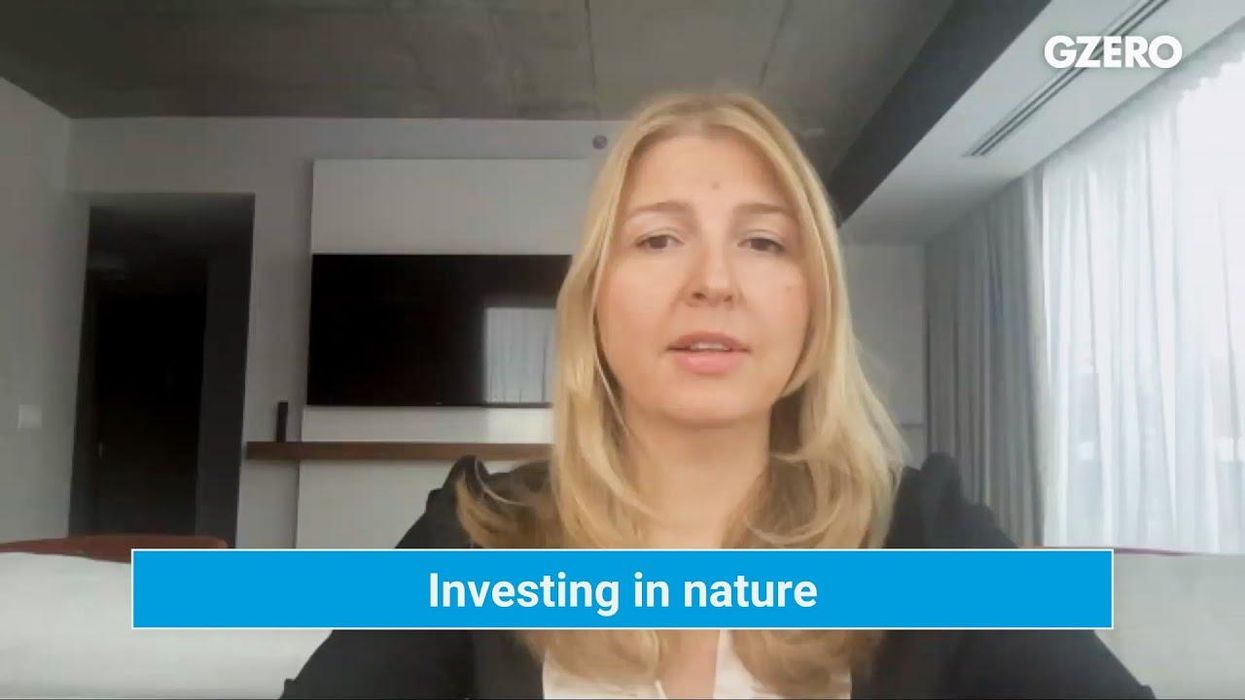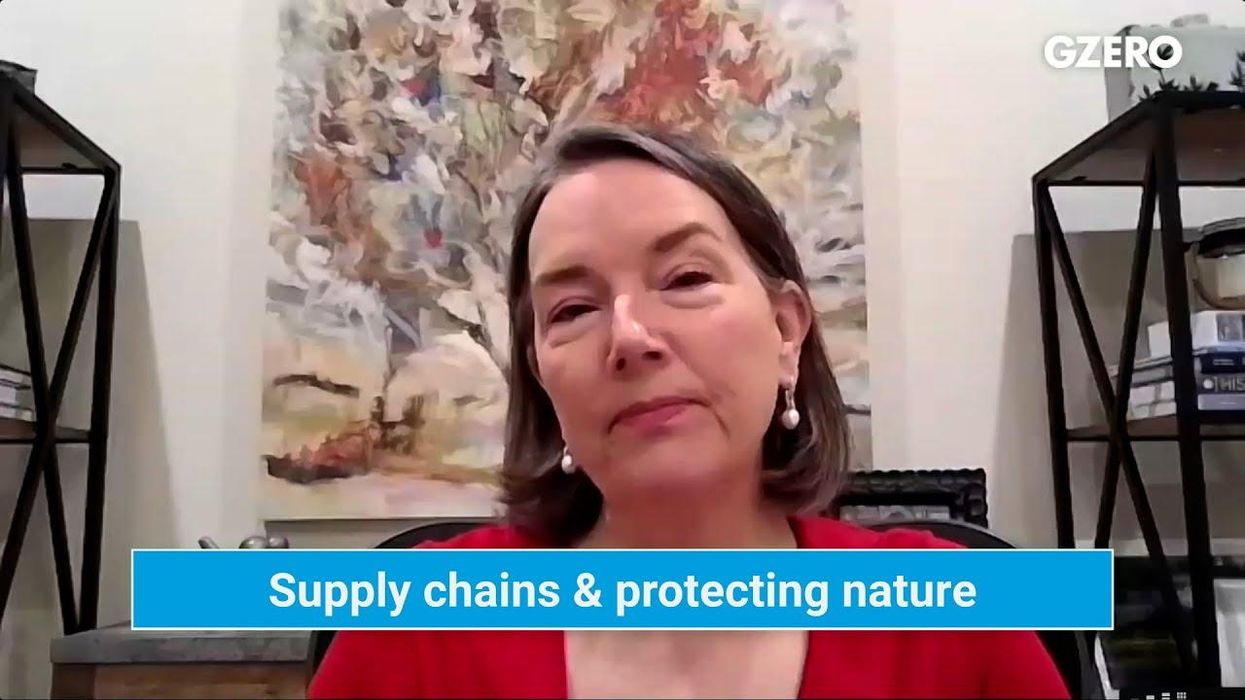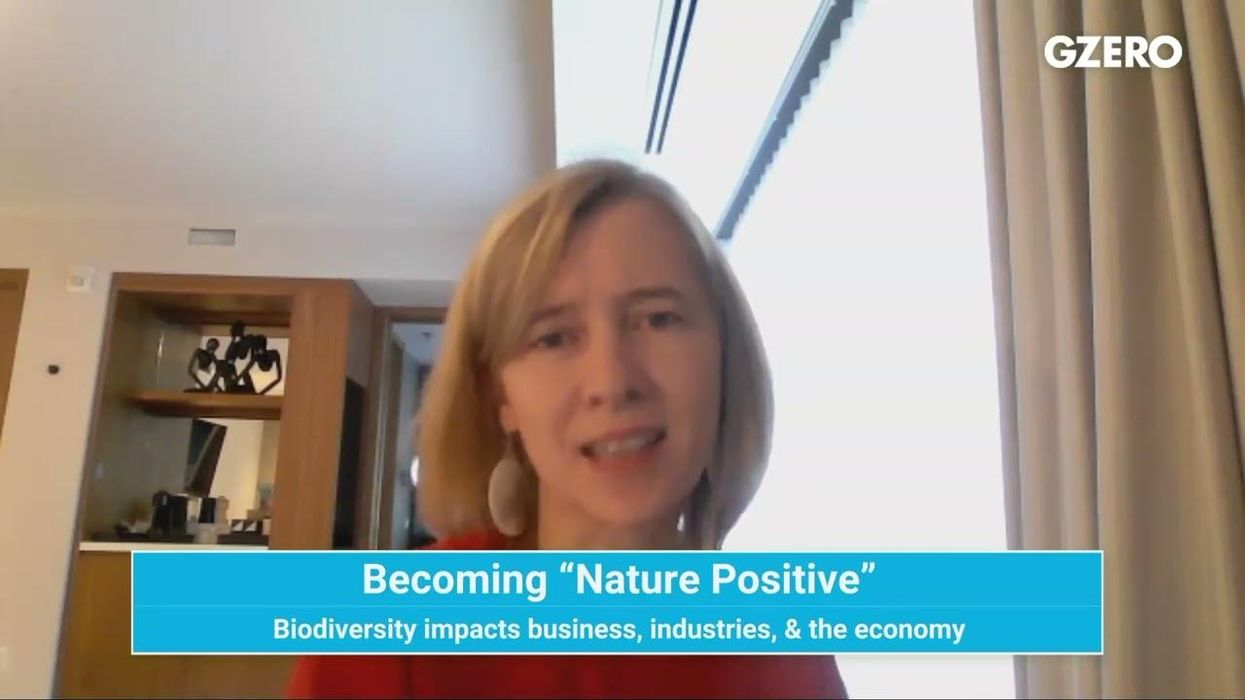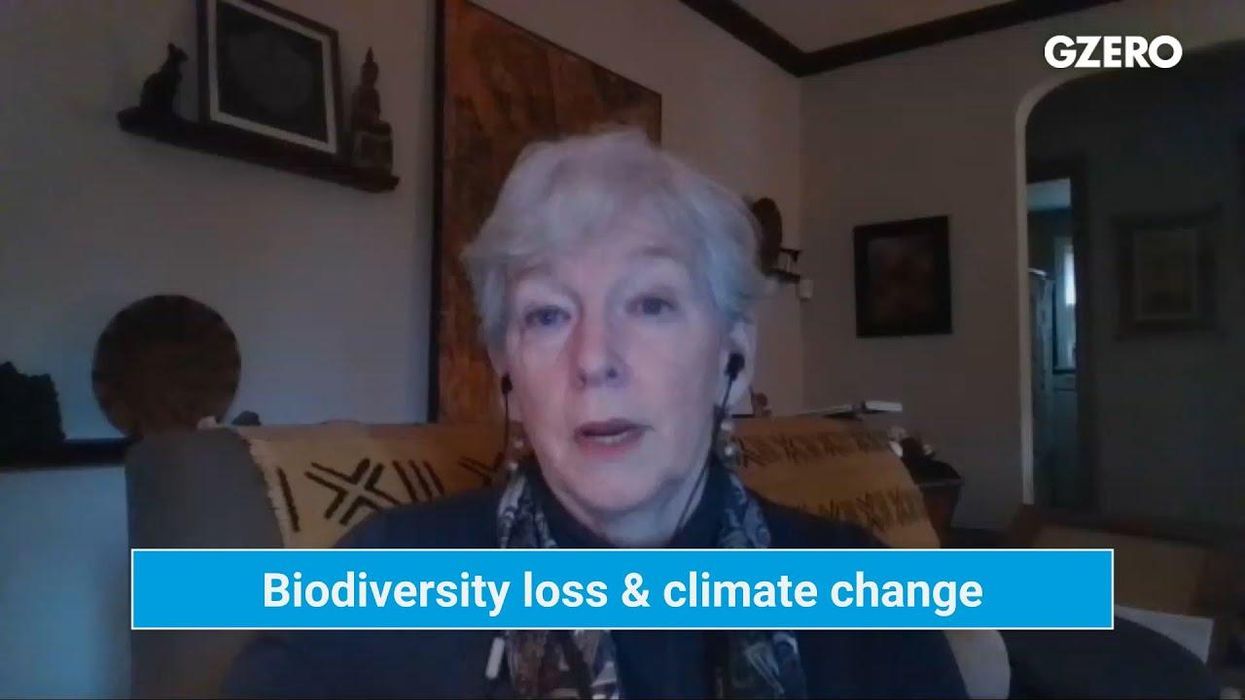Climate
Ian Bremmer: Biodiversity loss might break the system and businesses aren’t ready
When Ian Bremmer turned 50 in 2019, he was shocked to know there was less than half the biodiversity left on the planet than when he was born. That's depressing, but hopefully it'll soon have a snapback effect on humans and the economy, Eurasia Group's president says during "Time for nature: Turning biodiversity risk into opportunity," a livestream conversation hosted by GZERO in partnership with Suntory.
Jan 01, 2023
